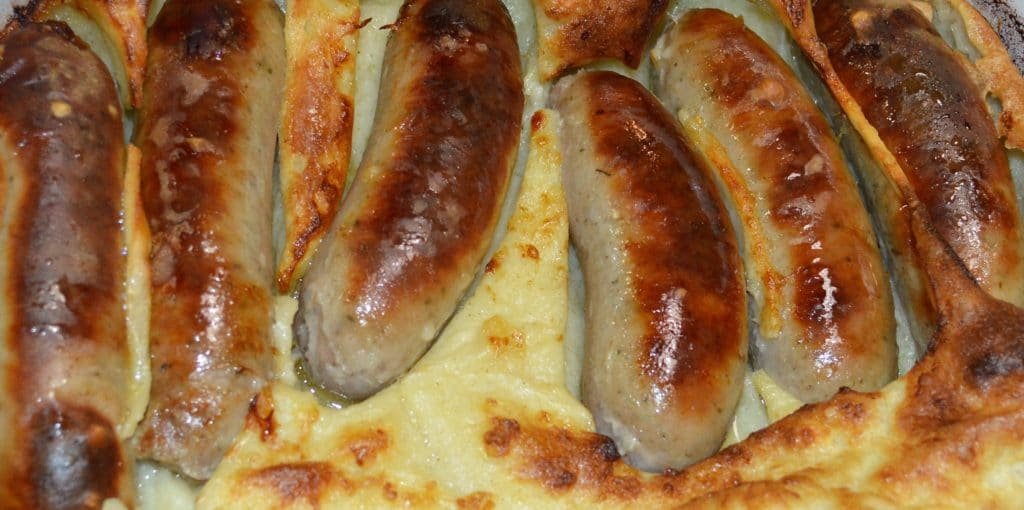
Toad in the hole is one of those traditional British comfort foods whose name always provokes a giggle among those unfamiliar with it. Victorian author Mrs Beeton referred to it as “a homely but savoury dish”. The dish of sausages in a baked batter pudding is a satisfying dinner when served with gravy and a vegetable side.
Batter puddings became popular in the 18th century. In Taste: The Story of Britain through its Cooking, author and historian Kate Colquhoun observes that there was a shift towards frugality in cookbooks and kitchen advice of the age with recipes showing how to make the most of one’s leftovers. Hannah Glasse makes one of the earliest mentions of a toad in the hole precursor in The Art of Cookery (1847) with her recipe for pigeon in a hole. A decade later, various records refer to batter puddings that contain leftover cold meats. Sausages would be a later addition and were no doubt a more thrifty alternative when there was no large roast beef to serve as the previous day’s dinner.
Another food historian India Mandelkern writes that toad in the hole was being served on a fairly regular basis by 1769 in some London dining clubs, an indication that the dish was fairly widespread and perhaps carried a certain trendy cachet. This was to be short-lived however. By 1780 the Royal Philosophers, a dining club composed of members of the Royal Society, had dropped it from their menus and it was regarded as rather vulgar. Indeed Francis Grose mentions it in his A Classical Dictionary of the Vulgar Tongue (1785), describing it as “meat baked, or boiled in pye crust”. The term would enter the Oxford English Dictionary just two years later, cementing its place in the national lexicon.
So where exactly did the name originate? That remains one of those much-debated questions to which we will likely never know the real answer. One widely-repeated story is that toad in the hole was created in Almouth, Northumberland to mark a golf tournament where a toad had dislodged the player’s ball from the 18th hole. The sausages, it is claimed, represent the toad’s legs poking out from the hole. Although a charming tale, this raises more questions than it answers. The original dish did not contain sausages so the claim of them resembling legs is doubtful, as is their actual resemblance to toad legs. Furthermore, why was this particular incident so memorable that it should be commemorated by a dish? And how did the dish then became known throughout the country?

Whatever the case, toad in the hole remains a firm British culinary favourite.
Toad in the Hole (Serves 4)
1 lb sausages
175g/6oz/1 1/2 cups plain flour
a pinch of salt
2 eggs, beaten
450ml/3/4 pint/2 cups milk
4 tbs oil or butter
 Sift the flour and salt into a bowl. Make a well in the middle and add the eggs and milk. Beat together to create a smooth batter. Leave the batter to stand for at least thirty minutes.
Sift the flour and salt into a bowl. Make a well in the middle and add the eggs and milk. Beat together to create a smooth batter. Leave the batter to stand for at least thirty minutes.
Preheat the oven to Gas 7/220C/425F. Put the oil into a baking dish and place in the oven for 3-5 minutes. Add the sausages to the hot oil and cook for 10-15 minutes until they are starting to brown.
Give the batter mix another quick whisk to get rid of any lumps that may have formed. Pour the batter over the sausages and into the hot oil. (Note that you want the oil to be very hot in order for the batter to rise).
Bake for 40-45 minutes, until the sausages are cooked and the batter has risen and is golden. Serve hot with gravy.




One thought on “Toad in the Hole”
Comments are closed.